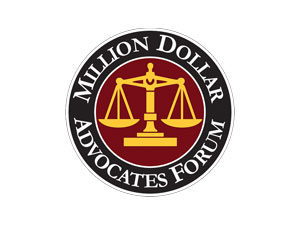$5.5M
$5.1M
$4.2M
$2.9M
$2.8M
$2.5M
$2.4M
$2.2M
Life is precarious for anyone who needs to be on dialysis. At Hannon Legal Group, we understand that when you go on dialysis, you entrust your health and often your very life to the staff at the dialysis center and they have a duty to be very careful while you are in their care. When kidney dialysis malpractice occurs in Florida, the results can be devastating.
Understanding Kidney Disease in America
Over 20 million Americans suffer from chronic kidney disease. In fact, it’s the ninth leading cause of death. But dialysis isn’t for every patient. Dialysis only becomes necessary for individuals who have been diagnosed with End-Stage Renal Disease (ESRD), or kidney failure.
Over 240,000 of the 340,000 people in the United States suffering from kidney failure are on dialysis. The cost for treating kidney failure in the U.S. is nearly $18 billion per year. Dialysis is a multi-billion-dollar business in America and when providers put profits over people, patients often pay the ultimate price. When that happens in Florida, the dialysis malpractice lawyers at Hannon Legal Group are here to help.

Treatment for Kidney Failure - Two Types of Dialysis
What is dialysis? And what does a dialysis machine do? The machine (and process) serves as a sort of artificial kidney for your body, cleansing toxins, waste, and unwanted water from your blood stream, while keeping the levels of chemicals like sodium and potassium in your blood stream in balance.
Of the two kinds of dialysis—hemodialysis and peritoneal—the vast majority (90%) of dialysis patients receive hemodialysis.
What kinds of Kidney Dialysis Errors are Happening?
Kidney dialysis malpractice or dialysis errors happen when private, for-profit Dialysis centers pay more attention to their profits than to their patients and make preventable errors that cause harm. The federal government’s GAO, or General Accounting Office, discovered that many dialysis centers haven’t been meeting the standard for what the government considered to be adequate care.
According to a Medicare investigation uncovered by Hannon Legal Group, over one-fifth of the patients at 512 Medicare Dialysis facilities were receiving sub-standard care during their dialysis treatment. These centers have small staffs who often receive inadequate training.
Shifts in Healthcare May Be Leading to More Cases of Kidney Dialysis Malpractice
It used to be that most dialysis was administered at non-profit or not-for-profit entities like community hospitals or academic medical centers. But with all the money being spent to treat kidney failure, it’s no surprise that a large number of outpatient, for-profit kidney dialysis treatment centers have popped up across Florida and the country.
The vast majority of these outpatient dialysis clinics are owned by a few large healthcare companies. Fresenius Medical Care and DaVita Healthcare Partners, Inc. are two examples of the biggest in Florida and across the US.
DaVita Kidney Care, a division of DaVita Healthcare Partners, Inc., manages, operates, or owns more than 2,000 outpatient dialysis centers in the United States alone. The company boasts over 46,000 employees. Fresenius Medical Care operates or owns over 3,300 such clinics worldwide. In 2013, their revenue exceeded $14 billion.
Unfortunately, what’s good for business isn’t necessarily good for your health. A recent study uncovered by Hannon Legal Group indicated that people who receive dialysis treatments at these for-profit dialysis centers experience an 8% higher risk of mortality than if they had sought dialysis at a non-profit clinic. The study further suggested that some 2,500 deaths each year could be avoided if patients chose to receive their dialysis care at a non-profit dialysis clinic. Medical malpractice with respect to kidney dialysis is on the rise.
What Are the Kinds of Kidney Dialysis Errors?
With all the moving parts and pieces of dialysis treatment, there are many ways that kidney dialysis error malpractice can take place. As with any other kind of medical malpractice, kidney dialysis malpractice means that a dialysis provider failed to meet the minimum adequate standard of care for patients and that their negligence resulted in pain, suffering, or worse for the patient.
Kidney Dialysis errors could involve:
- Causing infections in the bloodstream due to contamination of lines or machinery
- Dialysate error (meaning there was an improper use of acid concentrate in a hemodialysis machine)
- Dialysis machine leaks
- Dialyzer errors
- Excess blood loss or prolonged bleeding
- Failing to clear dialysis machines of cleaning solutions
- Failure to monitor blood pressure and/or other vital signs
- Improper responses to machine alarms
- Malfunctioning machine alarms
- Medication error
- Negligent cleaning, maintenance and filtering of water system at the clinic
- Patient falls
- Vascular access-related events

What Harm Comes to Kidney Dialysis Error Victims?
Because of the nature of renal disease, kidney dialysis malpractice can cause harm ranging from a little blood loss to bleeding to death or when the dialysis filters are not properly cleaned or timely changed, chlorinated city water may be pumped into a patient's blood stream throwing patients into hemolytic anemia. Some patients have an acute heart attack and die or are left to live as a cardiac cripple because the heart no longer functions properly after suffering damage.
How Victims of Dialysis Malpractice in Florida Can Be Compensated
If you or a loved one suffered harm because of negligence at a kidney dialysis center, you may be entitled to substantial compensation. Your healthcare provider can be held accountable for dialysis errors and required to pay money damages to you for your loss. Compensation may include money for:
- Pain and Suffering,
- Lost Wages: When a dialysis error means missing time from work, you could be entitled to recover your lost wages or salary.
- Medical Bills: Negligence health care providers can be ordered to pay for the current and future medical expenses needed to treat the damage they caused.
- Wrongful Death: If a dialysis error leads to death, wrongful death compensation may be awarded.
- Punitive Damages: In rare cases, if the dialysis provider’s negligence was egregious, additional financial damages may be awarded to punish the provider and to help prevent something like it from happening again.
Turn to Hannon Legal Group if You are a Victim of Kidney Dialysis Malpractice in Florida
If you or a loved one suffered harm or injuries because of negligent care at a dialysis center in Florida, you’ll want a knowledgeable and experienced dialysis malpractice firm in your corner to ensure that you receive just compensation. The Miami-based law firm, Hannon Legal Group understands what it takes to demonstrate that your dialysis center’s substandard care led to the harm you’ve experienced. Our trial lawyers handle dialysis malpractice cases in every jurisdiction in the State of Florida. Call (305) 358-3109 today to speak with a Dialysis error lawyer.















